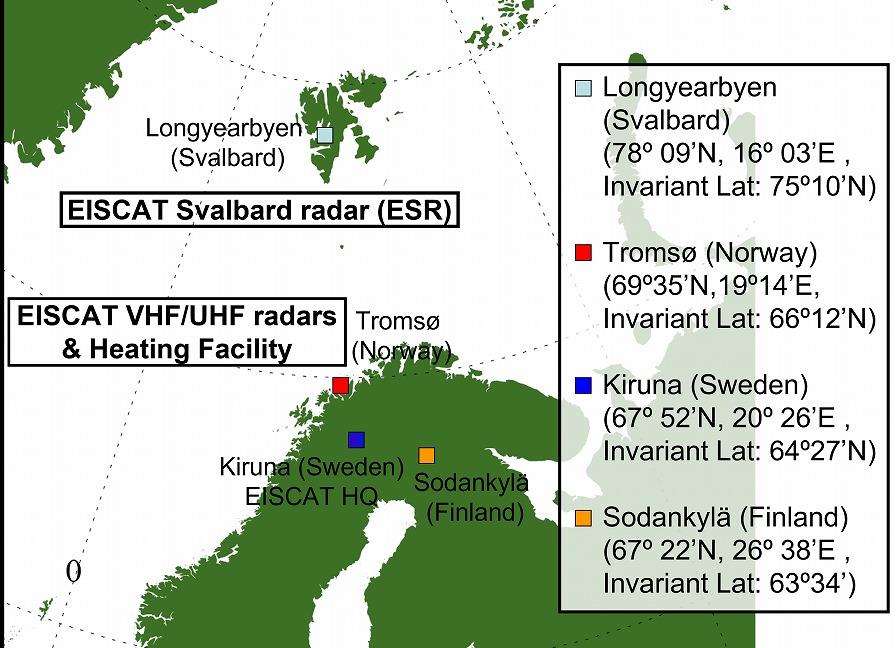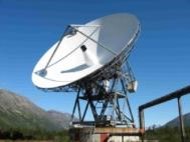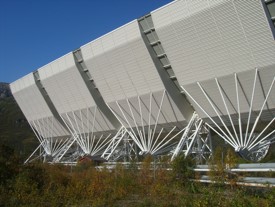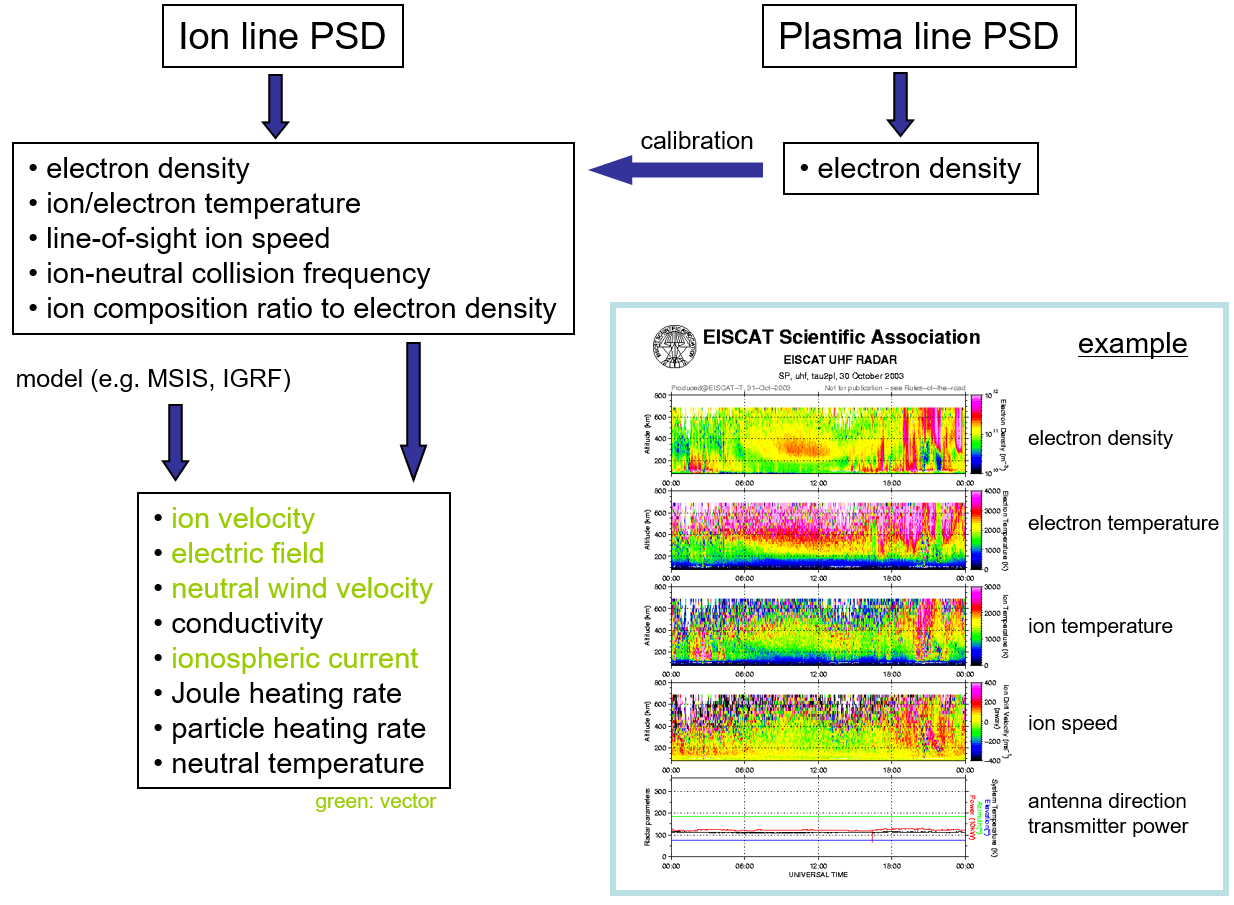General Info
About EISCAT
EISCAT radars
EISCAT was established in 1975 by six European countries (Finland, France, Germany, Norway, Sweden, and United Kingdam) for conducting research on the lower, middle and upper atmosphere and ionosphere.While there are ten incoherent scatter (IS) radars in the world so far, IS radar is the most powerful ground-based diagnostic for measuring the atmosphere. The EISCAT radar is capable for detecting the coherent scatter from the ionosphere and middle atmosphere. Colocated ionospheric heating facility is used for ionospheric modification experiments.
There are three incoherent scatter radar systems belonging to the EISCAT (European Incoherent Scatter) association: (1) the VHF radar in Tromsø, Norway (66N and 117E in the geomagnetic coordinate) capable

conducting the tristatic measurement with two remote antennae at Kiruna, Sweden, and Sodankylä, Finland, (2) dwellable UHF radar in Tromsø, and (3) two UHF radar systems located in Longyearbyen, Svalbard. In addition, the ionospheric heating facility is also operated in Tromsø by the EISCAT association.

EISCAT Svalbard radars (ESR) are operated at 500MHz with the steerable parabolic 32m anntena (left; since 1996) and with the 42m field-aligned antenna (right; since 1999).


EISCAT operates the UHF (left; 931MHz) and the VHF (right; 224MHz) radars at Tromsoe, Norway since 1981 and 1988, respectively. The UHF radar system was capable for employing the steerable tristatic method using two remote receivers at Kiruna, Sweden and Sodankyla, Finland. However, the remote receivers system were converted to receive the VHF signal instead of the UHF because of interference from telecommunications. The UHF radar is now operated as the monostatic system.
Participation of Japan
Japan joined the EISCAT association in 1996 with supplying the 42m antenna as the second one for the EISCAT Svalbard radar.
Measurements

The incoherent scatter (IS) radar provides height-resolved measurements of the electron density, electron and ion temperatures, and line-of-sight ion velocity. These are fundamental parameters to calculate other ionospheric parameters such as the electric field, conductivity, current, and so on. Figure at the right-hand-side is a default format adopted in the EISCAT radar to present the four basic ionospheric parameters and house-keeping information. Incoherent Scatter radar tutorial can be found, for example, here.

